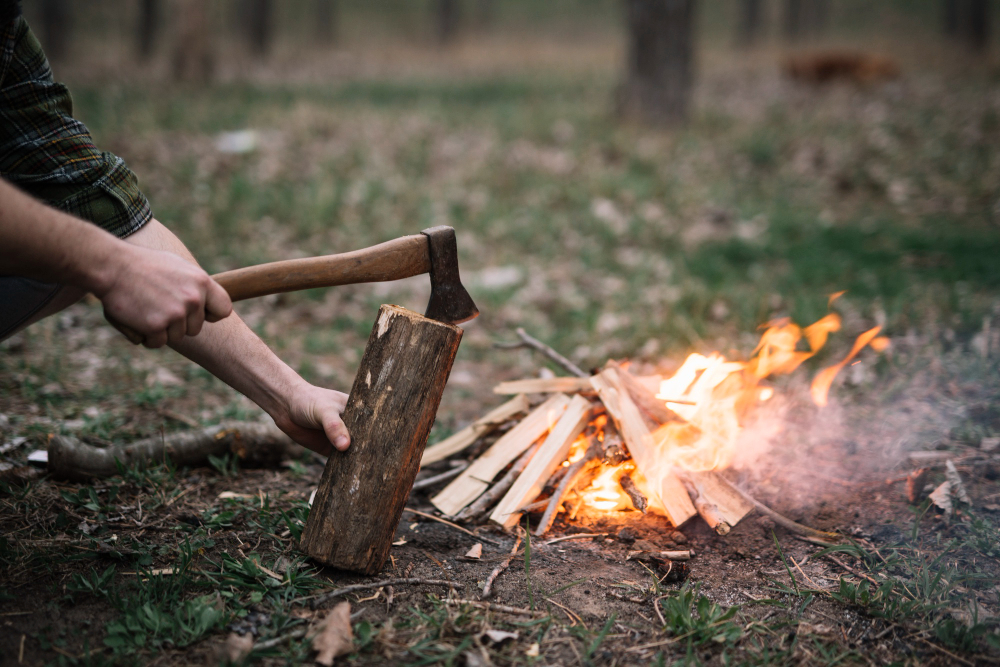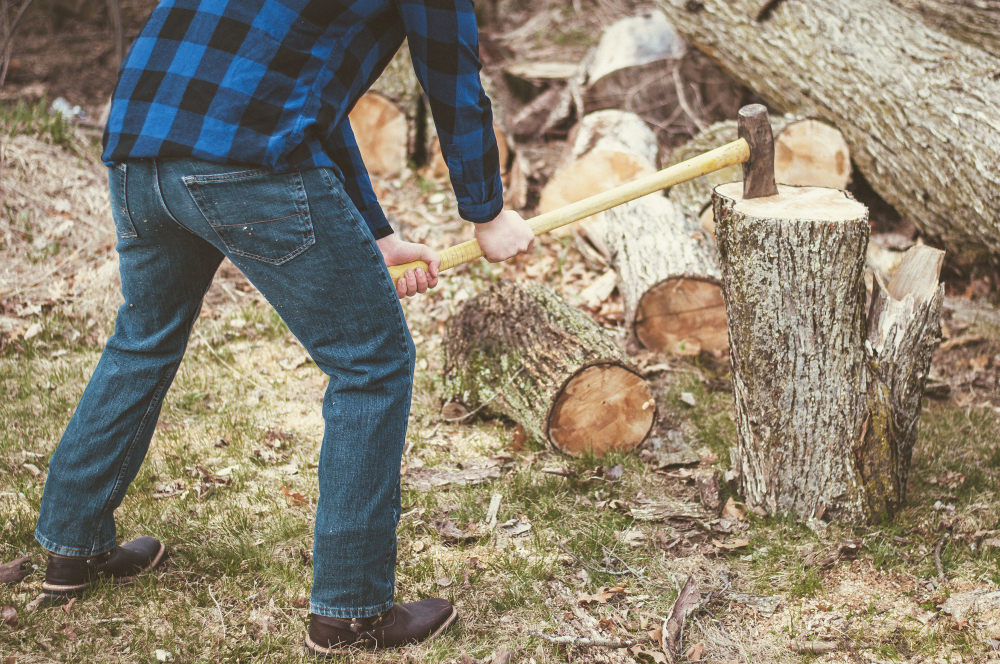


There’s something inherently satisfying about working with your hands outdoors, splitting logs, clearing trails, or prepping firewood for camp. 
Among the many tools that outdoor enthusiasts rely on, few are as iconic or potentially dangerous as axes. While it’s a powerful tool with undeniable utility, it also demands respect. Every year, thousands of people suffer avoidable injuries due to improper use, dull blades, or poor judgment. Whether you’re an experienced outdoorsman or a beginner picking up this classic tool for the first time, knowing how to handle it safely is essential.
Here’s a guide to help you stay injury-free while making the most of your time in the wild.
Before making a swing, consider whether you’re using the right tool. Different tasks call for different axes.
For instance, a full-sized chopper is excellent for splitting large rounds of firewood, while a compact hatchet is better suited for light camp chores like carving kindling or clearing brush.
Using the wrong tool not only makes your job harder, but it also increases the risk of injury. Too many accidents happen because people try to force a small blade through a big log or use an oversized chopper or splitter for precision work.
A dull edge might sound safer than a sharp one, but that’s a misconception. Dull blades require more force, increasing the chance of slipping or bouncing unpredictably. Keep the edge sharp so it bites cleanly into wood and doesn’t deflect off the surface.
Just as critical is the condition of the handle. Before use, inspect it for cracks, splinters, or any wobbling where the head meets the shaft. Even minor damage can become catastrophic with just one swing. If anything feels loose or compromised, don’t use it. Instead, repair or replace it first.
Gear is part of the plan when working with sharp tools. Wear boots with reinforced toes to protect your feet, especially when chopping and splitting logs. Gloves help with grip and can shield your hands from splinters or minor nicks, while safety glasses protect against flying debris.
Wear boots with reinforced toes to protect your feet, especially when chopping and splitting logs. Gloves help with grip and can shield your hands from splinters or minor nicks, while safety glasses protect against flying debris.
It’s also wise to avoid loose clothing or accessories that could catch on the handle mid-swing. Comfortable, snug-fitting layers give you freedom of movement without the risk of interference.
Chopping in the wrong environment can be just as risky as poor technique. Choose flat, stable ground that gives you a firm stance. Keep the area clear of tripping hazards like loose branches or gear, and always ensure a safety radius around you, about twice the length of your arm and tool combined.
Make sure your wood is positioned correctly. Chopping or splitting on unstable logs or slick surfaces increases the chance of your tool bouncing or glancing off unpredictably. A simple stump or chopping block is ideal for keeping your work stable.
Good technique beats brute strength every time. Keep both hands on the handle, with a firm grip and eyes on the target. Begin your swing with control rather than speed; it's about rhythm, not raw power. Don’t overextend your arms or twist your body mid-swing.
If you're tired, stop. Fatigue leads to mistakes. Just like you wouldn’t continue target shooting once your form starts to slip, you shouldn’t continue chopping when your focus or grip weakens.
Proper storage and transport matter when you're finished using it. Always sheath the blade when it’s not in use, and never carry it casually over your shoulder or with the edge exposed. Carry it with the blade down and your hand firmly on the handle.
At home or camp, store it somewhere dry and out of reach from children or anyone unfamiliar with its use. Storage care goes a long way in keeping you and others safe.
Working with axes safely requires preparation, awareness, and respect. It’s about avoiding injury and being practical, precise, and responsible in everything you do. At Boundary Waters Catalog, we take pride in curating tools built for real use, and we encourage all outdoor enthusiasts to handle them with the respect they deserve.
A few extra precautions now can mean the difference between a productive afternoon and an unwanted trip to the emergency room. Stay sharp—your blade and instincts—and your time outdoors will be safer and more rewarding.